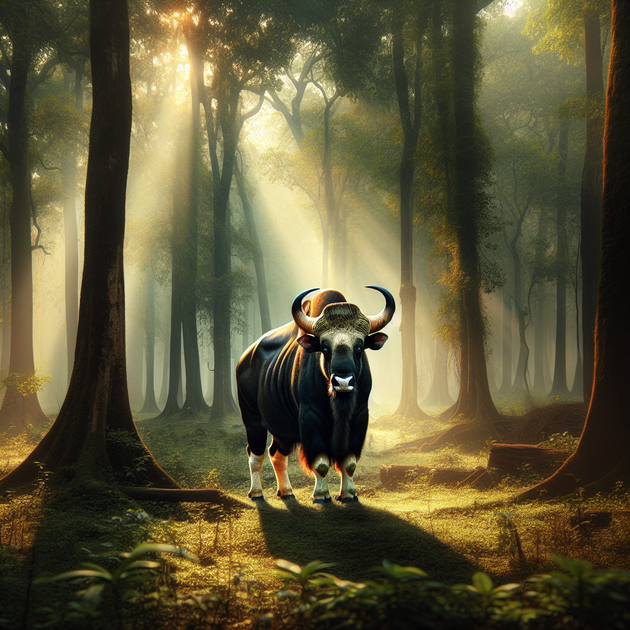Have you ever seen a cow so big that it makes a regular bull look tiny? That’s exactly what happens when you spot an Indian Gaur up close. These gentle giants are some of the most impressive creatures roaming India’s forests—yet most people have never heard of them. Let’s get acquainted with this massive but surprisingly shy animal.
What Is an Indian Gaur?
The Indian Gaur (sometimes called the “Indian bison,” though it isn’t a true bison) is actually the world’s largest species of wild cattle. If you’re imagining something about the size of your average farm cow—think again! Adult male gaurs can weigh up to 1,500 kilograms (that’s more than a small car) and stand over 6 feet tall at their shoulders.
But don’t let their bulk fool you. Despite their intimidating size and muscular build, gaurs are peaceful grazers who’d rather snack on grass than bother anyone. You’ll find them in forested hills and grasslands across India (and also in parts of Southeast Asia), usually sticking together in herds.
Why Seeing an Indian Gaur Up Close Is So Special
If you ever get lucky enough to see an Indian Gaur up close—like in this [Reddit post by Sea_Pianist_4531](https://www.reddit.com/r/interestingasfuck/comments/1nxptc0/indian_gaur_up_close/)—it can be a jaw-dropping moment. Here’s why:
- Size: They’re truly massive compared to any other animal in India’s forests.
- Appearance: Glossy dark brown coats and distinctive white “stockings” on their legs make them stand out.
- Horns: Both males and females have curved horns that sweep back from their heads.
- Behavior: They move quietly through dense forests despite their bulk—and are famously shy around humans.
- Rarity: Spotting them isn’t easy; they’re masters at blending in or slipping away unnoticed.
Standing just a few meters away from one is almost like meeting a living relic from another age.
Anecdote: Stumbling Upon a Gaur
A few years ago while hiking through Nagarhole National Park in southern India, I heard something heavy moving through the bamboo groves. Expecting maybe an elephant or just another deer herd, I stopped dead when a huge black shape emerged from behind a tree—it was my first real encounter with an Indian Gaur up close.
It felt like time slowed down for both of us. The gaur paused mid-step and stared with calm curiosity before flicking its ear and lumbering off into the shadows. Despite its sheer size (I could barely see over its back), it moved so gently that I hardly heard its footsteps vanish into the forest.
That moment stuck with me—not just because I got to see such a rare animal so close, but because I realized how much these animals rely on staying hidden to survive.
A Few Fascinating Facts About Gaurs
- Their closest relatives are domestic cattle—but they’re way bigger!
- A full-grown bull’s neck muscles are so developed that it looks like it’s flexing all day long.
- Gaurs can run surprisingly fast for short bursts if threatened.
- Younger males often form bachelor groups before joining herds led by dominant females.
- Their main threats are habitat loss and occasional hunting—but tiger predation is rare since even big cats think twice before taking on a grown gaur.
Conservation Status & Why It Matters
The good news? Gaurs aren’t considered endangered right now—they’re listed as “Vulnerable,” mainly due to shrinking forests and poaching pressures in some areas. Conservation efforts focus on protecting large tracts of forest where herds can roam safely without bumping into farms or roads.
India has done pretty well at setting aside national parks where gaurs thrive alongside elephants, deer, and even tigers. But with more development happening every year, these protected spaces matter more than ever for keeping giants like the gaur around for future generations.
So next time you think of India’s wildlife stars (looking at you, elephants and tigers), spare a thought for the humble yet mighty gaur—the real heavyweight champ of the jungle!
Have you ever spotted an impressive animal in the wild? What would you do if you came face-to-face with an Indian Gaur?

Leave a Reply